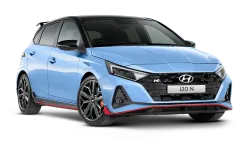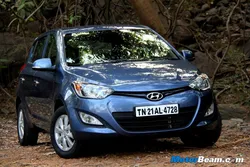

Hyundai i20 Generation 1 Facelift 2012 Overview
Explore the Hyundai i20, specifically the Generation 1 Facelift 2012 model. Discover its features and specifications, perfect for enthusiasts in Portugal.
The Hyundai i20, a subcompact hatchback, made a significant impact in the automotive market since its initial launch in 2008. However, it was the facelift of the first generation in 2012 that truly marke...
Technical Specifications
Select Version
Dimensions
Engine
Driving
Others
History and Features
Mycarro AI
Apr 27, 2025
The Hyundai i20, a subcompact hatchback, made a significant impact in the automotive market since its initial launch in 2008. However, it was the facelift of the first generation in 2012 that truly marked an evolution of this popular model. This facelift brought with it not only aesthetic changes but also improvements in performance, technology, and comfort, making the Hyundai i20 an even more attractive option for buyers looking for an efficient and stylish vehicle.
Performance Enhancements
The 2012 facelift of the Hyundai i20 retained most of the engine options from the original model but included fine-tuning improvements. The model was available with a range of engines, including petrol and diesel options, which were designed to provide a balance between performance and fuel efficiency. The most notable engine for fuel economy was the 1.1-liter CRDi diesel, which allowed drivers to enjoy up to 27 km/l, making it an exceptional choice for those concerned with running costs. Meanwhile, the petrol engines provided spirited performance, particularly the 1.2-liter variant, which ensured a smooth and responsive driving experience.
Exterior Design Changes
One of the first things that catch the eye with the facelifted Hyundai i20 is its revamped exterior design. The most significant change came with the introduction of a new, bolder front grille, which made the car appear more aggressive and modern. The curved headlights and redesigned bumper gave the vehicle a fresh and youthful look. Additionally, the rear of the car saw modifications, with updated taillights that enhanced visibility and aesthetics. These design changes not only modernized the appearance but also contributed to improved aerodynamics, thereby enhancing fuel efficiency.
Interior Comfort and Technology
Inside, the Hyundai i20 facelift showcased an upgraded dashboard, featuring higher quality materials and a more contemporary layout. The cabin became an attractive and functional space, presenting drivers and passengers with a feeling of comfort and refinement. Notably, the facelifted model incorporated several technological enhancements, introducing features such as a touchscreen infotainment system, Bluetooth connectivity, and USB ports. Higher-end trims offered additional luxuries, such as automatic climate control and a panoramic sunroof, making the i20 a well-equipped hatchback in its class.
Safety Features
Safety has always been a priority for Hyundai, and the 2012 i20 facelift took this commitment seriously. The updated model included features such as anti-lock braking system (ABS), electronic brake-force distribution (EBD), and multiple airbags as standard across various trims, reflecting the brand's dedication to passenger safety. Furthermore, the structure of the car was enhanced to improve crashworthiness, helping the i20 achieve encouraging safety ratings during crash tests.
Market Reception and Sales
Upon its release, the Hyundai i20 Generation 1 facelift received positive reviews from critics and consumers alike. The combination of stylish design, improved performance, and a plethora of features resonated well with buyers in the subcompact segment. Additionally, the brand's reputation for reliability and customer service contributed to the model's strong sales figures and increased popularity in diverse automotive markets, including Europe and Asia.
Conclusion
The 2012 facelift of the Hyundai i20 Generation 1 marked an essential step in the evolution of this successful subcompact hatchback. With its striking design, enhanced comfort, and improved technology, the Hyundai i20 became a formidable competitor in its segment, appealing to a wide range of buyers. As it turned out, this facelift was not just about aesthetics, but rather a well-rounded improvement that solidified i20's place in the hearts of many car enthusiasts. The legacy of the first-generation i20 continues to influence Hyundai's design and performance philosophies well into their subsequent models.
